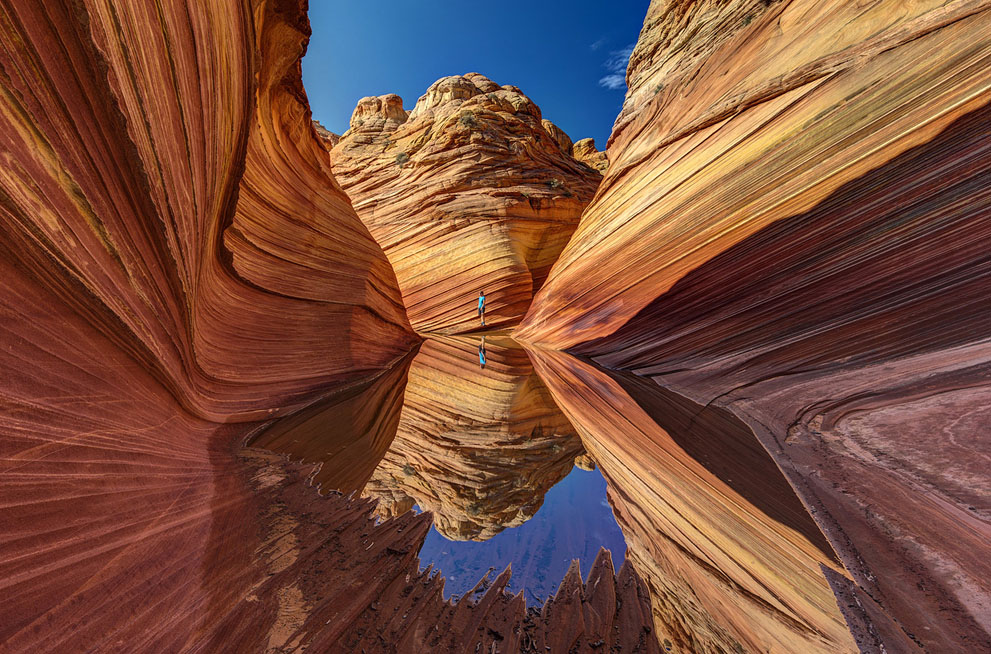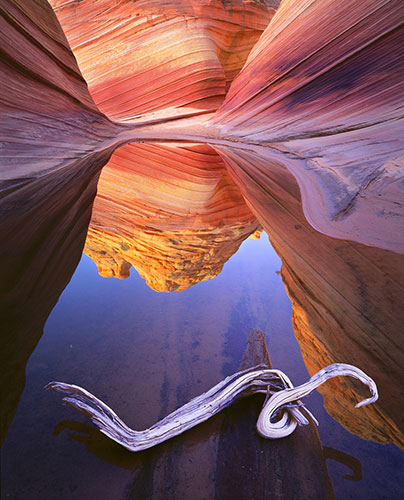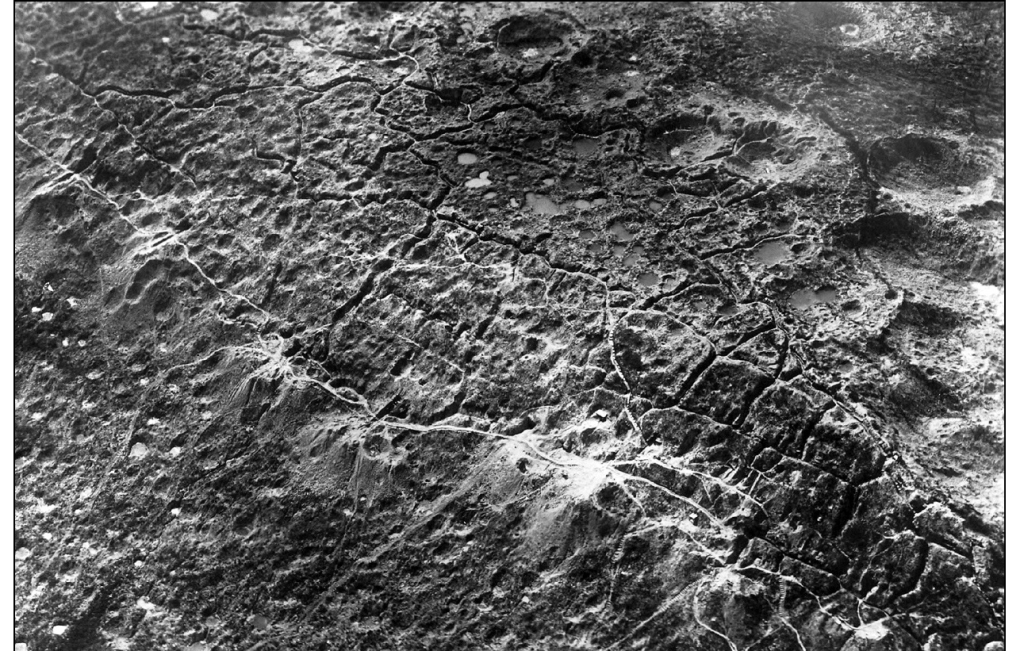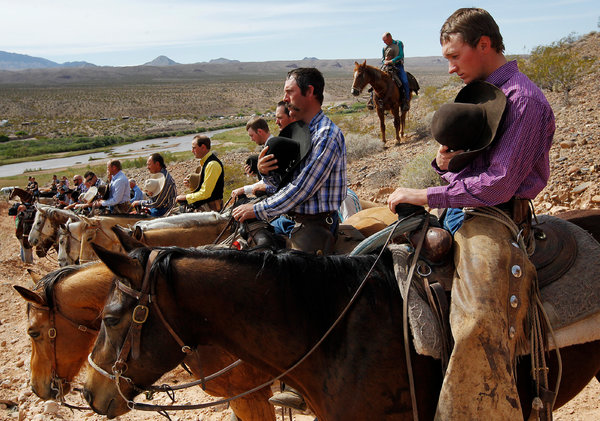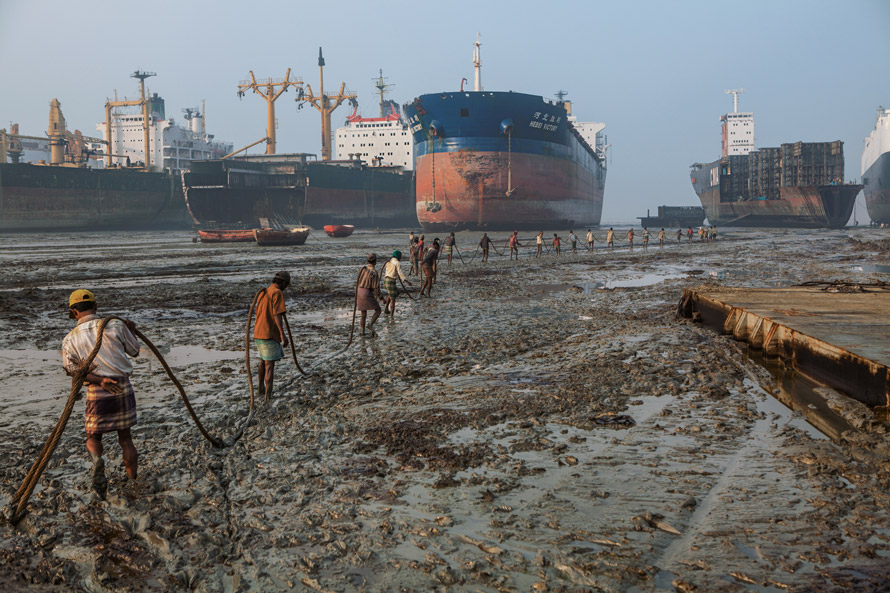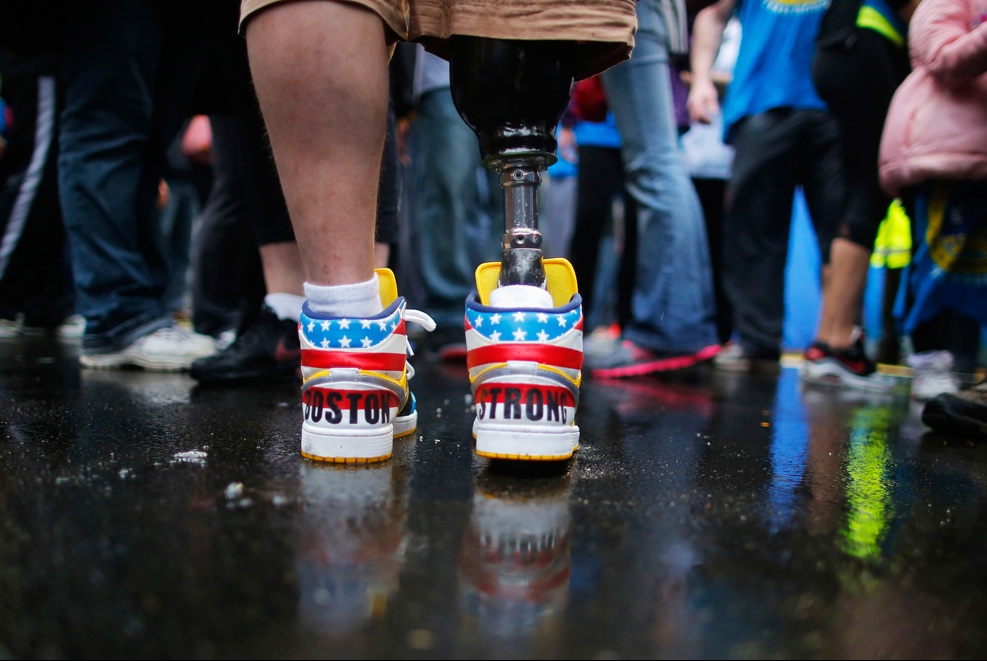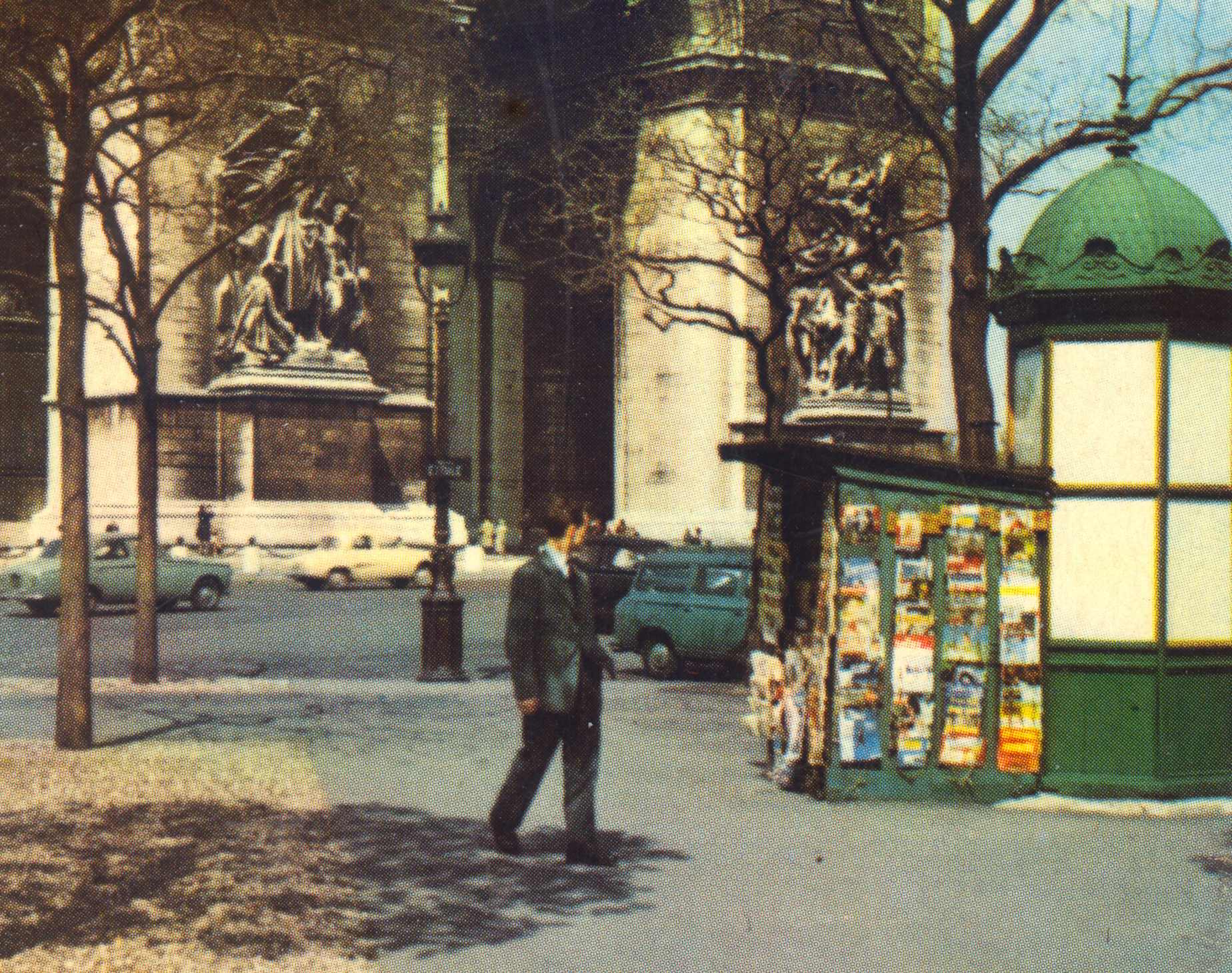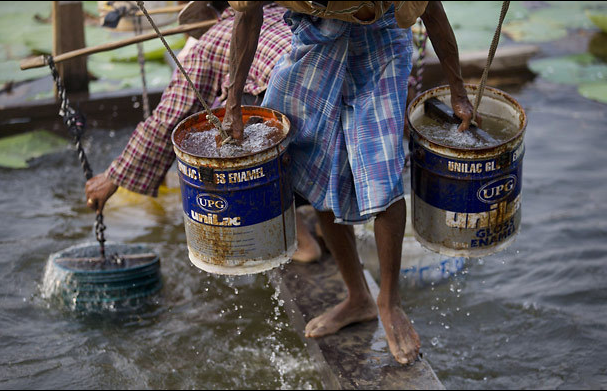In Focus has put up some of the entries for the National Geographic Traveler Photo Contest. All are remarkable examples of natural wonder and artistic skill, and some are simply stunning. One might ask, however, to what extent they are original. Are we really seeing something new, or seeing with new perspective and insight, or are the photographs recycling images that, however lovely, are nonetheless familiar sights. The leading image at the In Focus slide show provides a useful vantage on the question, for it is a double image.
Beautiful, isn’t it? It’s also a study of geological processes, and of photography as a way of seeing. Now that we’ve exhausted my knowledge of geology, we can turn to the optical dimension. A still pool of water mirrors the earth and sky above; one element becoming a reflective medium for two others. Deep in the center of the image, a tiny figure stands and is reflected as well. These double images model the actual photograph, which is the still reflection of what was actually in front of the camera. Nature is copied inadvertently by itself (in the water) and then again and intentionally so by the photographer. (I believe it was Shaw who said that human beings are nature becoming aware of itself.) And the single photograph’s depiction of copying also can reflect its repetition at the National Geographic website, In Focus, here, and surely elsewhere as well, and with that the definition of photography as a medium of mechanical reproduction.
Which may be why we shouldn’t be surprised to have seen the image before.
Sure, it’s not exactly the same, but take a good look. Note the many formal similarities, right down to the single grey figure in the foreground of the second photograph and the background of the first. Prop0rtions, colors, cropping, and the like vary a bit, but let’s not deny the obvious. In fact, we’ve shown it before at this blog, but that is the least of it. The second image has been publicly available, including on the cover of one of the photographer’s books and through charity auctions for environmental causes. Even the comments on the first image when it was the Photo of the Day at National Geographic include remarks that it’s been seen before, particularly as desktop wallpaper; significantly, these are not criticisms, they don’t diminish the reader’s sense of natural beauty, and one comment leads to explicit admiration of the work necessary to get the shot.
Does this mean that originality doesn’t matter to either photographers or their audience? Not really, but it does suggest that the question of originality is the wrong question. First, we should consider that not everyone will have seen any given image before, including perhaps the photographer who took the more recent version, and that new viewers are coming along all the time; originality, like clarity, is not a product of the image or the text but rather a relationship between the work and its audience. Second, allusion and more direction reproduction of previous work is an important component of fine art, and many fine artworks are studies in very similar subjects in very similar styles; originality is rarely the only value in aesthetic judgment, and consider also how judgment has gone awry when it was the only consideration. Third, multiple readers of a book by the same reader, or multiple viewings of a painting by the same viewer, are taken to be a compliment and not the sign of some failing; an artwork rewards revisiting because it is a distinctive (and reflective) encounter with its subject, and photography can do that as well. Fourth, and most important, photography is not a public art, and its more casual attitude about originality is one mark of that difference; what needs to be appreciated, however, is how the high rates of replication are, although not without their problems, nonetheless a source of cultural value.
People don’t go to the Vermilion Cliffs Monument to see something no one has seen before; they go to have an encounter with nature’s beauty; something that may be a distinctively human response. We don’t look at a photograph of the natural marvels to be seen there because we want to have a unique aesthetic experience, but to have one that others have enjoyed as well. In place of the original, a copy; in place of the unique work of art, a community.
These habits are easy to belittle, and let me be clear that I think the world needs every kind of art, not simply those I would label public arts. That said, the images above might merit additional appreciation. Let’s think of them as Deep Copies: that is, as images that reflect reflection and reproduce reproduction, and do so elegantly, beautifully, profoundly. Nor do they do so abstractly, but rather by showing how these processes for replication are part of something material, whether mineral strata being laid down crystal upon crystal for eons, or the social habits that continuously pass along human societies from generation to generation, or the imaging processes of the human brain as it creates consciousness itself.
And to see any of that, we will have to see the same image more than once.
Photographs of The Wave landform, Vermillion Cliffs Wilderness, Arizona, by Nicholas Roemmelt/National Geographic Traveler Photo Contest and Jack Dykinga/Corbis-iLCP.
